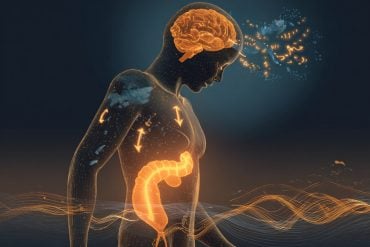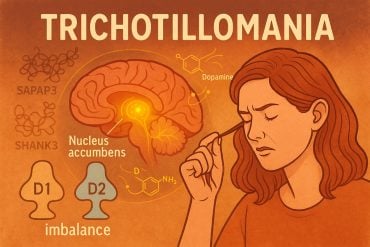Summary: New research shows that the time of day when blood samples are taken significantly impacts the levels of Alzheimer’s biomarkers, including p-tau217, which is crucial for early diagnosis. Biomarker levels were found to be lowest in the morning and highest in the evening, indicating that timing could affect dementia diagnosis and monitoring.
Researchers suggest standardizing blood sampling times to improve the accuracy of diagnosing and tracking Alzheimer’s. This finding opens new avenues for understanding how daily rhythms influence brain health.
Key Facts:
- Alzheimer’s biomarkers, such as p-tau217, fluctuate based on the time of day.
- Biomarker levels were lowest in the morning and peaked in the evening.
- Standardizing the time of day for blood tests could improve diagnosis accuracy.
Source: University of Surrey
The time of day when blood is taken can affect the results of tests for diagnosing dementia, according to new research led by the University of Surrey.
Researchers found that the biomarkers used to diagnose Alzheimer’s, including a promising marker for early diagnosis of the condition, varied significantly depending on the time of day. Biomarker levels were at their lowest in the morning when participants woke and highest in the evening.
The p-tau217 biomarker, which could help with early diagnosis of dementia, showed big differences depending on the time of day. Researchers discovered that the variation between morning and evening levels was similar to the changes seen in people whose mild memory problems get worse over a year.

Dr Ciro della Monica, research fellow at the Surrey Sleep Research Centre at the University of Surrey and first author of the publication, said:
“This work shows the importance of considering the time of day when taking clinical diagnostic samples and how the clinical picture for an individual may be affected by varying sample times. By standardising the time of day that a sample is taken, the diagnosis of dementia and tracking disease progression can become more accurate.”
The study looked at 38 participants living with mild Alzheimer’s, their caregivers and health controls while they were residents at the Surrey Sleep Research Centre, which is part of the UK Dementia Research Institute’s (UK DRI) Care Research & Technology Centre.
Instead of taking one blood sample, as is the case in the majority of clinical practices, the participants had their blood taken every three hours for 24 hours.
Four out of five measured biomarkers (p-tau217, Aβ40, Aβ42, and NfL) showed levels of fluctuation throughout the day. Only GFAP did not show a statistically significant variation.
Currently, it is not known what is driving these time-of-day differences. It may relate to sleep and sleep-related reduction in the production or clearance of these markers from the brain to the circulation, meals, posture, activity, or circadian mechanisms.
Nevertheless, the findings imply that the time of day of sample collection is relevant in the implementation and interpretation of plasma biomarkers in dementia research and care. Overall, these findings indicate that the time of sampling should be standardised or at least recorded.
Professor Derk-Jan Dijk, Director of the Surrey Sleep Research Centre, UK DRI Group Leader and senior author of the publication, said:
“Circadian rhythm research has demonstrated that almost all variables related to physiology and brain function vary with time of day. This study shows that translating this basic knowledge to the area of dementia research holds great promise for a better understanding, diagnosis and treatment of Alzheimer’s.”
About this Alzheimer’s disease research news
Author: Dalitso Njolinjo
Source: University of Surrey
Contact: Dalitso Njolinjo – University of Surrey
Image: The image is credited to Neuroscience News
Original Research: Open access.
“P-tau217 and other blood biomarkers of dementia: variation with time of day” by Ciro della Monica et al. Translational Psychiatry
Abstract
P-tau217 and other blood biomarkers of dementia: variation with time of day
Plasma biomarkers of dementia, including phosphorylated tau (p-tau217), offer promise as tools for diagnosis, stratification for clinical trials, monitoring disease progression, and assessing the success of interventions in those living with Alzheimer’s disease.
However, currently, it is unknown whether these dementia biomarker levels vary with the time of day, which could have implications for their clinical value.
In two protocols, we studied 38 participants (70.8 ± 7.6 years; mean ± SD) in a 27-h laboratory protocol with either two samples taken 12 h apart or 3-hourly blood sampling for 24 h in the presence of a sleep–wake cycle.
The study population comprised people living with mild Alzheimer’s disease (PLWA, n = 8), partners/caregivers of PLWA (n = 6) and cognitively intact older adults (n = 24). Single-molecule array technology was used to measure phosphorylated tau (p-tau217) (ALZpath), amyloid-beta 40 (Aβ40), amyloid-beta 42 (Aβ42), glial fibrillary acidic protein, and neurofilament light (NfL) (Neuro 4-Plex E).
Analysis with a linear mixed model (SAS, PROC MIXED) revealed a significant effect of time of day for p-tau217, Aβ40, Aβ42, and NfL, and a significant effect of participant group for p-tau217. For p-tau217, the lowest levels were observed in the morning upon waking and the highest values in the afternoon/early evening.
The magnitude of the diurnal variation for p-tau217 was similar to the reported increase in p-tau217 over one year in amyloid-β-positive mild cognitively impaired people.
Currently, the factors driving this diurnal variation are unknown and could be related to sleep, circadian mechanisms, activity, posture, or meals.
Overall, this work implies that the time of day of sample collection may be relevant in the implementation and interpretation of plasma biomarkers in dementia research and care.






